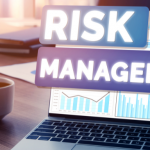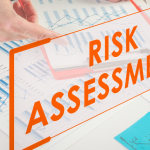Executive Summary
-
Predictive analytics is revolutionizing risk management by leveraging AI to foresee potential risks.
-
The financial sector is increasingly adopting these tools to enhance decision-making and mitigate unforeseen challenges.
-
Despite its benefits, challenges such as data privacy and model accuracy must be addressed.
-
A step-by-step guide to implementing predictive analytics in risk management.
-
Expert insights on best practices for integrating predictive analytics into existing systems.
Introduction
In the fast-paced world of finance, managing risk is paramount. The surge of data and advancements in AI have paved the way for predictive analytics, offering a transformative approach to risk management. As we dive into 2025, understanding and implementing predictive analytics can provide a competitive edge for investors, financial institutions, and corporate leaders. This article explores the intricacies of predictive analytics in risk management, its benefits, challenges, and strategies for successful adoption.
Definitions / Context
Predictive analytics involves using statistical algorithms and machine learning techniques to identify the likelihood of future outcomes based on historical data. In risk management, it helps anticipate financial risks, fraud detection, credit scoring, and more, enabling proactive measures to safeguard assets.
Benefits / Pros
-
Enhanced Decision-Making: By offering data-driven insights, predictive analytics aids in making informed financial decisions.
-
Proactive Risk Mitigation: Identifies potential threats before they materialize, allowing for strategic interventions.
-
Improved Efficiency: Automates risk assessment processes, reducing time and resource expenditure.
-
Fraud Detection: Advanced models can spot anomalies in transactions, leading to early fraud detection and prevention.
Risks / Cons / Challenges
-
Data Privacy Concerns: Handling large datasets raises privacy issues that need stringent governance.
-
Model Accuracy: The reliance on historical data may lead to inaccurate predictions if not constantly updated.
-
Integration Complexities: Aligning predictive analytics systems with existing risk management frameworks can be challenging.
How to Implement Predictive Analytics in Risk Management
-
Assess Needs: Identify key areas where predictive analytics can add value.
-
Data Collection: Gather relevant data from internal and external sources.
-
Choose Tools: Select analytics tools and platforms that fit your organizational needs.
-
Develop Models: Build algorithms tailored to your specific risk management requirements.
-
Test and Validate: Ensure models are accurate and reliable through rigorous testing.
-
Integrate and Deploy: Seamlessly integrate analytics into existing systems and processes.
A leading financial institution leveraged predictive analytics to enhance its credit risk assessment. By implementing advanced models, they reduced default rates by 20%, showcasing the tangible benefits of predictive analytics in risk management.
Expert Tips / Strategic Insights
-
Adopt a Holistic Approach: Integrate predictive analytics into all aspects of risk management for comprehensive insights.
-
Continuous Learning: Regularly update models with new data and trends to maintain accuracy.
-
Collaborate with Tech Experts: Work with AI specialists to tailor predictive models to your organization’s specific needs.
Tools / Resources / Calculators
-
R and Python: Popular programming languages for building predictive models.
-
TensorFlow and PyTorch: Machine learning frameworks to develop and deploy predictive analytics systems.
-
Financial Modelling Prep: Online resources for financial risk prediction and analysis.
Conclusion
Predictive analytics is a game-changer in risk management, offering financial institutions the foresight needed to navigate uncertainties. By embracing these advanced tools, organizations can not only safeguard their assets but also enhance their competitive edge. Interested in integrating predictive analytics into your risk strategy? Connect with our team for expert guidance.


















